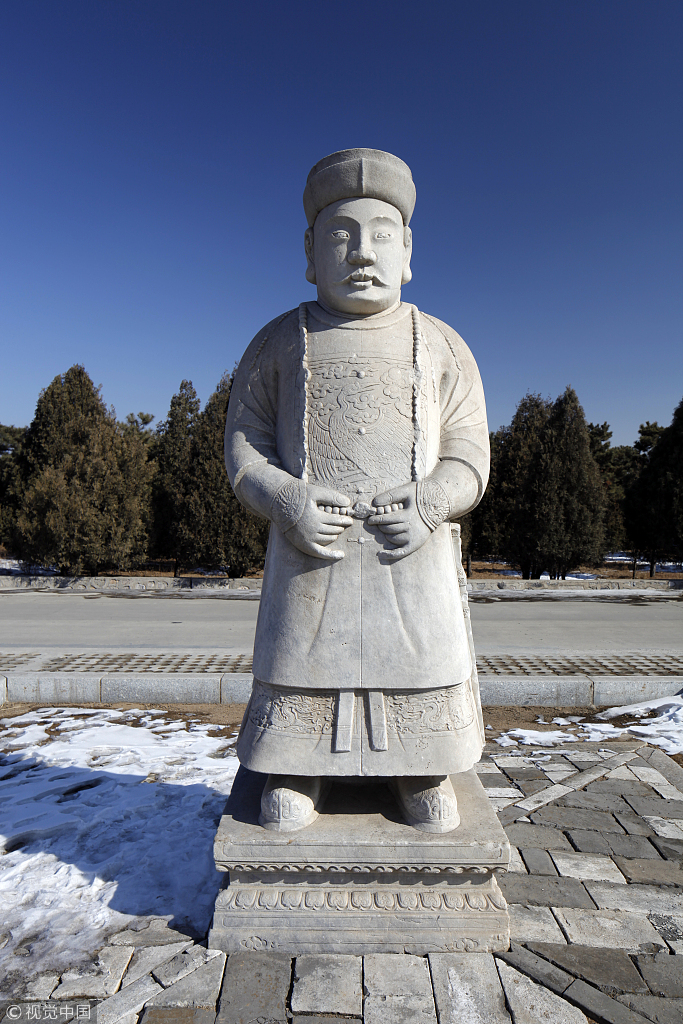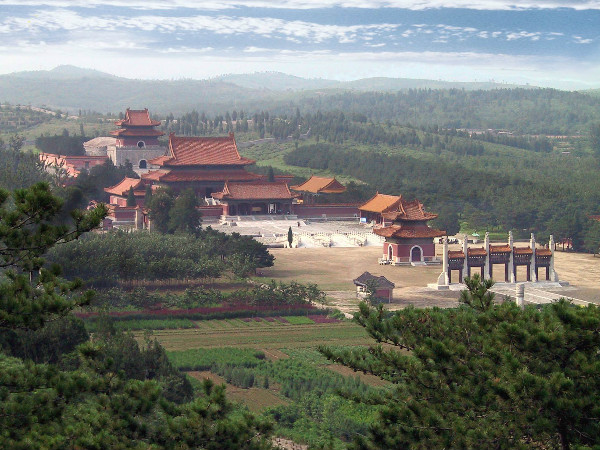Imperial Tombs of the Qing Dynasty

The Eastern Qing Tombs and the Western Qing Tombs are located in Zunhua and Yixian respectively, two counties in north China's Hebei province. Surrounded by mountains, the two magnificent imperial tomb complexes are the largest and best preserved Qing Dynasty (1644-1911) mausoleums. They were inscribed on the World Heritage List in November 2000.
The complexes comprise over 100 ancient buildings and sculptures built under the Qing imperial codes for architectural style of imperial tombs. Those of the emperors, the empresses, and the imperial princes are covered with yellow glazed tiles, while those of the imperial concubines, princesses and lower-ranked family members are covered with green glazed tiles in various styles and showing varied landscapes.

Eastern Qing Tombs
The Eastern Qing Tombs are located in Zunhua, a locale at the intersection of Beijing, Tianjin, Tangshan, Chengde and Qinhuangdao. Within an area of about 80 square kilometers there are five emperor's tombs, four empress' tombs, five imperial concubine's tombs, and one princess’ tomb, with altogether 161 tomb occupants including five emperors, 15 empresses, 136 imperial concubines, three imperial sons (a ge), and two princesses.

Among them are the Shunzhi Emperor (r. 1644-1661), the first emperor of the Qing Empire after the Manchus marched through the Shanhai Pass and occupied Beijing as their new capital; the Kangxi Emperor (r. 1662-1722), who made great political achievements and had the longest reign among rulers of China; the Qianlong Emperor (r. 1736-1795) , who was in real power for the longest time and had the longest life; the Empress Dowager Xiaozhuang (1613-1688), an outstanding early Qing female politician who assisted two little emperors; and the Empress Dowager Cixi (1835-1908), the de facto late Qing ruler who was known for listening to state affairs from behind a curtain.

The Xiaoling Tomb of the Shunzhi Emperor is located on the central axis stretching from Mount Jinxing in the south to the main peak of Mount Changrui in the north. Other imperial tombs are arranged along the two sides of the central axis, following the traditional hierarchical convention of reserving the central position for superiors as a show of respect.
Construction of the Eastern Qing Tombs lasted for 247 years, from the building of the Xiaoling Tomb in 1661 to the building of the tomb of the Empress Dowager Cixi in 1908.
Western Qing Tombs
Western Qing Tombs are located at the foot of Yongning Mountain in Yixian county, Hebei Province, 120 km southwest of Beijing. They constitute the last imperial tomb complex of the Qing Dynasty. The site selection, design and construction of Western Qing Tombs were carried out in strict accordance with ancient Chinese geomantic theory. The area is surrounded by mountain ranges and intersected by the Beiyishui River and its 17 tributaries -- an abundance of water resources rarely seen in north China.

The construction of Western Qing Tombs lasted for 185 years (from 1730 to 1915), during which period 14 tombs of Qing imperial family members were constructed, including those of emperors Yongzheng (r. 1723-1735), Jiaqing (r. 1796-1820), Daoguang (r. 1821-1850), and Guangxu (r. 1875-1908). Others were built for nine empresses, 57 imperial concubines, two imperial princes, two princesses, and six imperial sons (a ge). It is a vast mausoleum area of 83 square kilometers, with 14 tombs, imperial residences, a religious sanctuary, barracks, and government offices.





